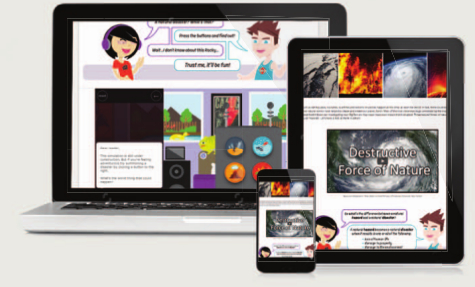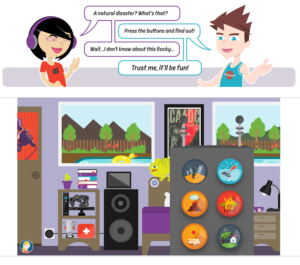Put away your books and pencils and don’t worry about whiteboard, class – we’re going online. Science class is about to get a lot more exciting (if that’s possible!) thanks to the new Double Helix Lessons.

Join Rocket and Skye to explore the new school way to learn about science
Put away your books and pencils and don’t worry about the whiteboard, class – we’re going online.
Science class is about to get a lot more exciting (if that’s possible!) thanks to the new Double Helix Lessons we’ve developed in partnership with tech company, Stile Education.

Teach kids a lesson on the tech they understand
Kids are using smartphones, social media and video games more regularly these days so teachers are embracing technology to ensure they are communicating on the same level.
Making sure that kids actually engage in school work is an ongoing challenge for schools as more technology is used in our everyday lives.
We’ve been communicating about science to kids for the past 30 years through our Double Helix publications which explain science in a fun and engaging way. And now Double Helix material is incorporated into sophisticated digital lessons for kids.
Students complete online activities that look like games but are actually educational science lessons.
Teachers have access to some pretty awesome assessment tools too. They can immediately see the outcomes of each lesson, track which students have completed each question, check their results and provide real-time feedback. They can even customise content themselves, including adding in their own questions and polls, or removing content as they see fit.
Mapped to the year 5 and 6 science curriculum, Double Helix Lessons is a suite of online interactive science lessons for upper primary school students designed to make it easy for any school to supercharge their science program.

Learn all about natural disasters in the first Double Helix Lesson
Students are taken on science adventures with the Double Helix characters – Rocket (Rocky), Skye and their pet Chameleon Kevin – as they discover the wonders of science in the world around them.
As they progress through the units, students interact with a combination of simulations, videos, animations, augmented reality and hands-on investigations. Students then apply their knowledge to real-world situations and even meet some of our scientists.
Students investigate natural disasters in the first unit. They learn about the dynamic processes that cause geological and meteorological hazards and explore how scientists predict and measure them.
The first unit is ready for classroom delivery now and the entire curriculum-complete program will be available by April 2017. What’s more is that it’s completely customisable to the requirements of your school.
If you’re a teacher, try the natural disasters unit for free with your class today by visiting doublehelixlessons.csiro.au.
Save
Save

